I am attempting to run some fairly simple code in the Visual Studio immediate window. All the code does is read some JSON input, from a file, and uses that to call some other methods, for loading a database with values. Here's the code block:
using Newtonsoft.Json.Linq;
using System;
using System.IO;
namespace POST.API
{
public class Initialization
{
public const string JSON_DATA_FILE = "C:\\OHA_SDD_POST_Development\\POST\\POST.API\\Services\\Setup\\InitializationData.json";
public const string JSON_OBJKEY_DOMAIN = "Domain";
public const string JSON_OBJKEY_ACCOUNTDOMAINTYPE = "AccountDomainType";
public const string JSON_OBJKEY_ORGLOCTYPE = "OrganizationLocationType";
public JObject POSTDataInitJObject;
public JArray Domains;
public JArray AccountDomainRoles;
public JArray OrganizationLocationTypes;
public API.Services.Domain SvcDomain;
public API.Services.Organization SvcOrganization;
public API.Services.Location SvcLocation;
/// <summary>
///
/// </summary>
/// <param name="JsonDataFile"></param>
public Initialization(string JsonDataFile = JSON_DATA_FILE)
{
string JsonData = File.ReadAllText(JsonDataFile);
POSTDataInitJObject = JObject.Parse(JsonData);
Domains = (JArray)POSTDataInitJObject[JSON_OBJKEY_DOMAIN];
AccountDomainRoles = (JArray)POSTDataInitJObject[JSON_OBJKEY_ACCOUNTDOMAINTYPE];
OrganizationLocationTypes = (JArray)POSTDataInitJObject[JSON_OBJKEY_ORGLOCTYPE];
}
/// <summary>
///
/// </summary>
public void Load()
{
LoadDomains();
LoadOrganizationLocationTypes();
}
/// <summary>
///
/// </summary>
/// <param name="Replace"></param>
public void LoadDomains(bool Replace = true)
{
SvcDomain = new API.Services.Domain();
if (Replace)
{
SvcDomain.ClearAllDomains(true);
}
foreach (var i in Domains)
{
SvcDomain.AddDomain(new API.Models.Domain
{
Code = (string)i["Code"],
Definition = new API.Models.TypeDefinition
{
Name = (string)i["Name"],
Description = (string)i["Description"],
Order = Int32.Parse((string)i["Order"])
}
});
}
}
/// <summary>
///
/// </summary>
/// <param name="Replace"></param>
public void LoadOrganizationLocationTypes(bool Replace = true)
{
SvcLocation = new API.Services.Location();
if (Replace)
{
SvcLocation.ClearAllOrganizationLocationTypes();
}
foreach (var i in OrganizationLocationTypes)
{
SvcLocation.AddOrganizationLocationType(new API.Models.OrganizationLocationType
{
Definition = new API.Models.TypeDefinition
{
Name = (string)i["Name"],
Description = (string)i["Description"],
Order = Int32.Parse((string)i["Order"])
}
});
}
}
}
}
I can successfully instantiate the object in the immediate window, but when I then try to call that Load() method, on that instance, I get:
A first chance exception of type 'System.Threading.ThreadAbortException' occurred in mscorlib.dll
Evaluation requires a thread to run temporarily. Use the Watch window to perform the evaluation.
I've alraedy turned off Options -> Debug -> Enable property evaluation and other implicit function calls.
Got me stumped... Seems super simple, and I totally can't get past it.



